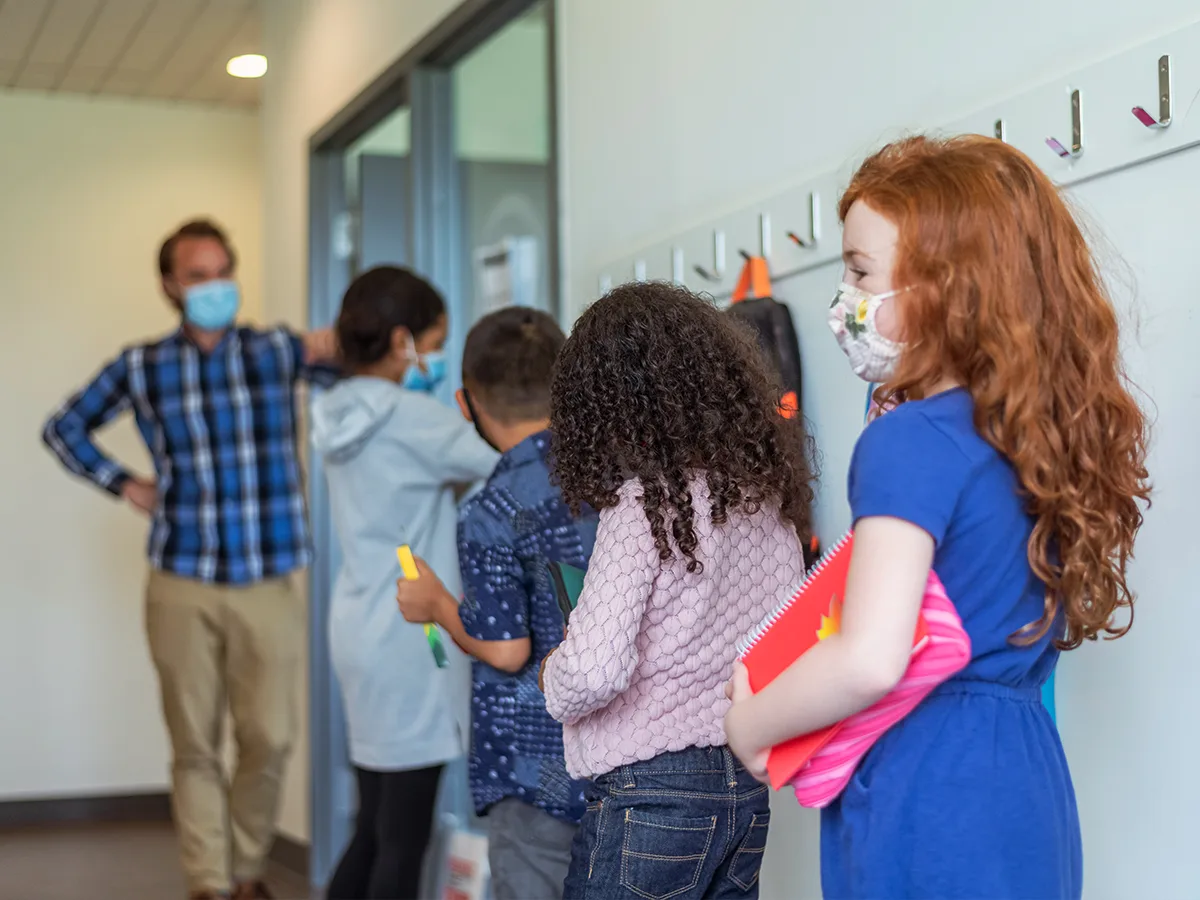What is trauma-informed teaching?

Expert reviewed by Jerome Schultz, PhD

At a glance
Trauma-informed teaching considers how trauma impacts learning and behavior.
Trauma can slow down or completely stop our ability to learn.
Kids experiencing trauma are more likely to fall behind in class or get in trouble for behavior issues.
Imagine you’re being chased by a tiger. Your heart races as you feel a surge of adrenaline preparing your body to fight, flight, or freeze. Now imagine that right after escaping the tiger, you have to learn how to multiply fractions. You would likely find this task near impossible, even if you usually find math easy.
Trauma-informed teaching starts with an understanding of how trauma can impact learning and behavior. With this approach, educators think about what student behavior may be telling them. And they reflect on their teaching practices to find ways to better support students who may be experiencing trauma.
Trauma can slow down or completely stop our ability to learn. When our bodies sense a threat, energy rushes toward brain regions specialized in averting danger. This is essential for keeping us alive. But it also means that energy shifts away from the brain regions that help us learn.
When students are experiencing trauma, they might be more distracted or take longer to complete tasks. They may be more irritable or jumpy. And they’re more likely to fall behind in class or get in trouble for behavior issues.
Dive deeper
What is trauma?
Trauma is a physiological and psychological response to any deeply upsetting or threatening situation. These situations can range from child abuse or neglect to a serious car wreck. Ongoing adversity such as discrimination, bullying, poverty, or community violence can also cause trauma.
Most kids will recover from a traumatic event after a few weeks or months. But repeated trauma or chronic adversity can put the brain on high alert, looking for the next threat. This is called hypervigilance. It can cause kids to overreact to seemingly neutral events, like a teacher asking them to turn in an assignment.
Keep in mind that kids can respond in different ways to the same experience. The coronavirus crisis is a perfect example of this. Some kids may be traumatized by the experience, while others may not be.
Learn more about trauma and the coronavirus pandemic.
Trauma and learning and thinking differences
Researchers agree that trauma negatively impacts learning and attention. But can trauma cause lifelong challenges like learning disabilities and ADHD, or vice versa? That’s unclear. What we do know is that accurate identification is essential to providing appropriate treatments.
Students who have experienced trauma are more likely to be referred to special education. Trauma might sometimes be misidentified as ADHD since the symptoms have a lot of overlap. Hyperactivity, restlessness, disorganization, and trouble focusing can be signs of either trauma or ADHD.
Referring students for an evaluation can help identify the underlying issue. But it’s important to find an evaluator who has experience with ADHD and trauma if both are a potential concern.
Families: Learn more about evaluations.
Signs of trauma in school
When teachers know a student has experienced trauma, they’re better prepared to support the student’s educational and emotional needs. But often, students won’t say anything. So how can teachers know if students don’t tell them?
The first step is to take note of any change in behavior, since it could be a signal that something is going on. A normally outgoing student may become more reserved. A student who is typically organized may suddenly be missing assignments.
Keep in mind that if the trauma happened or started in previous years, teachers might see these behavioral issues within the first few weeks of school. Students whose severe or ongoing trauma goes unnoticed may even have a reputation for having behavior issues.
Potential signs of trauma:
Overreactions to everyday challenges
Negative outbursts or aggression
Frequent stomachaches or headaches
Appearing very sad
Inappropriate social interactions
Trouble with executive functions like focus, organization, and self-regulation
Falling behind with classwork
Many of these behaviors could also be caused by other issues. Students might have a medical condition, anxiety, or learning and thinking differences.
Educators: Learn how to use compassionate curiosity to help uncover what might be causing certain behaviors.
How to use trauma-informed teaching
Teachers know the importance of building positive relationships with students and their families. These relationships are even more important for students who are experiencing trauma.
Trauma-informed teaching can help show students that teachers care. It can help teachers provide support. And it can help students recover after a traumatic event.
What does trauma-informed teaching look like? Making simple changes to class structure and interactions with students can have a huge impact on those who are experiencing trauma. Here are strategies for educators to try:
Be mindful of your own emotions. Identifying and managing your feelings is the first step in helping students manage theirs.
Expect that students will overreact sometimes. Provide the space and time they need to calm down. Let them know this is a normal response to trauma.
Give students opportunities to talk or write about their experiences. Understanding the reasons behind a student’s behavior can help you respond with empathy.
Remind yourself that behavior is a form of communication. Try not to take it personally.
Communicate with families about what you’re seeing. They might have ideas you could try in class. Or they might ask you for ideas on how to help at home.
Make sure your teaching is culturally responsive and doesn’t exacerbate traumatic experiences students may have had.
Teach and model social and emotional skills, including positive behavior strategies.
Ask the school counselor or other mental health specialist for recommendations and support. For behavior issues, a functional behavioral assessment can help identify what is causing the behavior and how to help.
Educators: Learn more about understanding behavior as a form of communication and using positive behavior strategies.
More trauma-informed resources for educators
Learning more about trauma-informed teaching strategies can help teachers support students. Explore these resources:
ASCD Educational Leadership: Trauma-Informed Teaching Strategies
Child Mind Institute: How Trauma Affects Kids in School
Learning for Justice: A Trauma-Informed Approach to Teaching Through Coronavirus
The National Child Traumatic Stress Network: Child Trauma Toolkit for Educators


